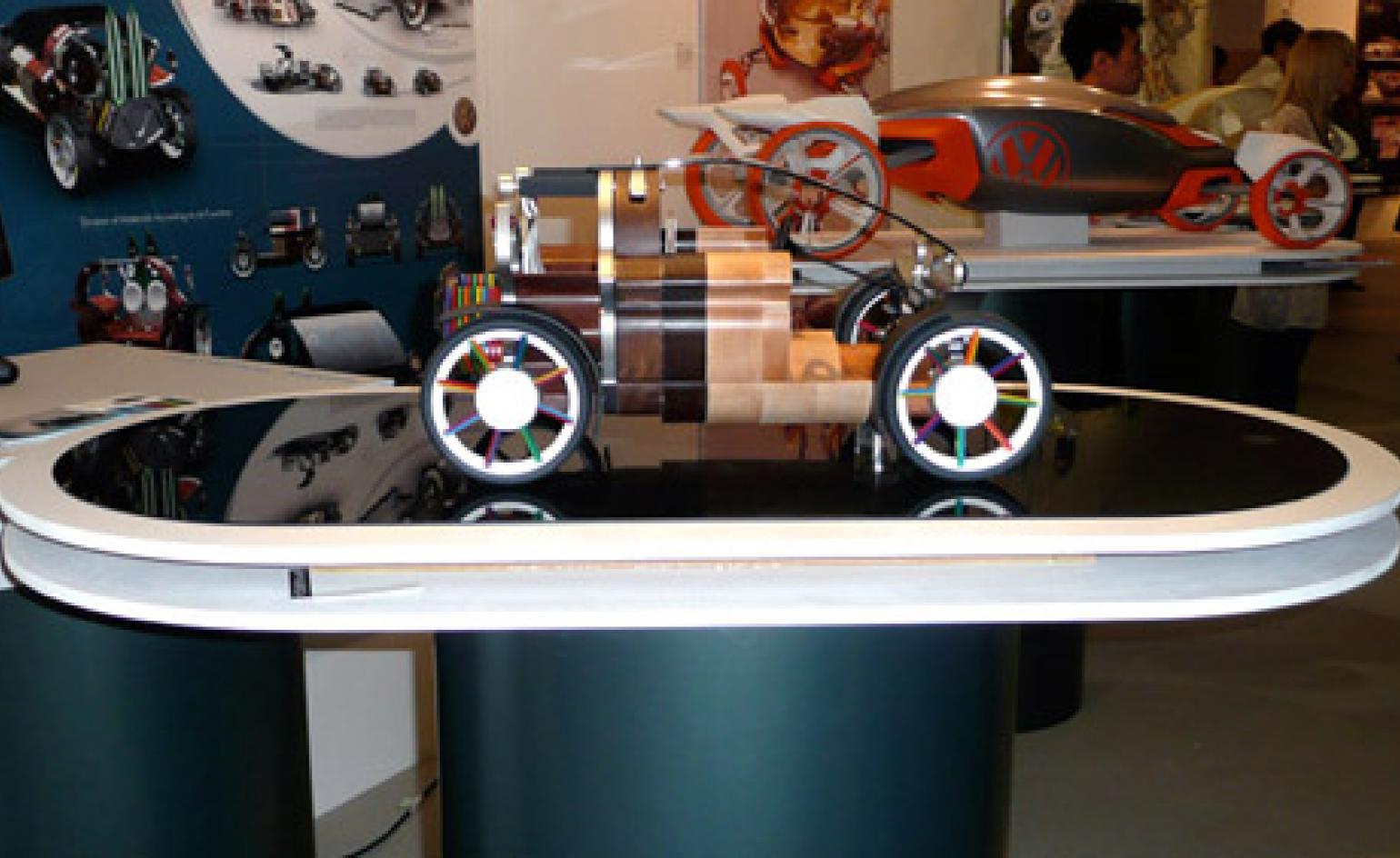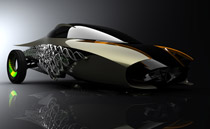RCA graduate show: Vehicle design

What we drive in the next decade is more or less born conceptually from within the walls of the RCA, thanks to its celebrated vehicle design course that continues to produce many of the thinkers and innovators in the automotive world.
This year is no exception. If anything, the young designers have had to explore beyond the confines of what can, at times, be a rather narrow discipline to address some real global concerns - the economy and sustainability. Despite these constraints, this year's show was a surprising celebration of the car and its form.

See and read about the work from this year's graduates
The 15 students graduating this year are an international mix, many of them having studied other forms of design including interior and architecture prior to signing up for the vehicle design MA. Course leader Dale Harrow is a passionate advocate of releasing vehicle design from the confines of the automotive world and exploring it in the wider context of transportation and mobility.
One student, Do Hyung Kim, is a former concert violinist. His Electric GT concept, sponsored by Bentley, was inspired by classical music and Art Deco. The lack of technological perfection in the 1920s, he notes, meant that cars had to rely on streamlined design and smooth surfaces for an efficient aerodynamic form. Today, he believes, we are facing similar technological insecurities so why not return to the perfect aerodynamic sculpture as an efficient way to design the future – in this case – premium eco-car.
The simple, albeit elegant, streamlined formal language also governed the architecture of Andrea Mocellin’s Exo-line concept study. The highly aerodynamic form - that at certain angels resembles a fashionable trainer - is also a tribute to sponsor Audi’s motor racing heritage. Exo-line is driven by human energy. It works a bit like a skateboard in that the car absorbs energy downhill, in this case stores it in the rear wheels to drive the car in other conditions.
We bumped into Marek Reichman, Aston Martin's Director of Design and also a visiting professor at the college. He was thrilled to see a return to beautiful, elegant surfaces – something that perhaps has been diluted in recent years with concerns for the environment stealing attention away from sculptural beauty. Why not have both?
Receive our daily digest of inspiration, escapism and design stories from around the world direct to your inbox.
Hong Yeo’s exhibit (pictured top), on the other hand, moves entirely away from styling. The South Korean designer has been intrigued by London’s ability to fuse the very old and the very new with such ease. Build Your Own Car, the winner of the Pilkington Award, tries to do just this. The modular construction works a bit like Lego in that different layers of material – some new, some very old pieces of carved wood – can be stacked together in a multitude of forms for the ultimate customisation. The car can also easily be dismantled and recycled at the end of its lifecycle.
German designer Magdalena Schmid goes one step further. Her concern is that in the age of extreme consumption our relation with the object has lost real meaning and has thus taken on a virtual identity. The former architecture student told us: “A car shouldn’t just be an object but it needs to make you move forward mentally. It is no longer about designing the surface of a car, but the values it represents as an object, for the user and the environment.” Her BMW Pixie concept car manipulates various porous materials and textures to create different way of surfacing that play with our notion of the real and the virtual.
A writer and editor based in London, Nargess contributes to various international publications on all aspects of culture. She is editorial director on Voices, a US publication on wine, and has authored a few lifestyle books, including The Life Negroni.
-
 Top 10 architecture moments of 2025
Top 10 architecture moments of 2025Architecture & environment director Ellie Stathaki picks the top 10 architecture moments of 2025, to recount, remember and reassess
-
 Step inside this perfectly pitched stone cottage in the Scottish Highlands
Step inside this perfectly pitched stone cottage in the Scottish HighlandsA stone cottage transformed by award-winning Glasgow-based practice Loader Monteith reimagines an old dwelling near Inverness into a cosy contemporary home
-
 Year in Review: we’re always after innovations that interest us – here are ten of 2025’s best
Year in Review: we’re always after innovations that interest us – here are ten of 2025’s bestWe present ten pieces of tech that broke the mould in some way, from fresh takes on guitar design, new uses for old equipment and the world’s most retro smartwatch